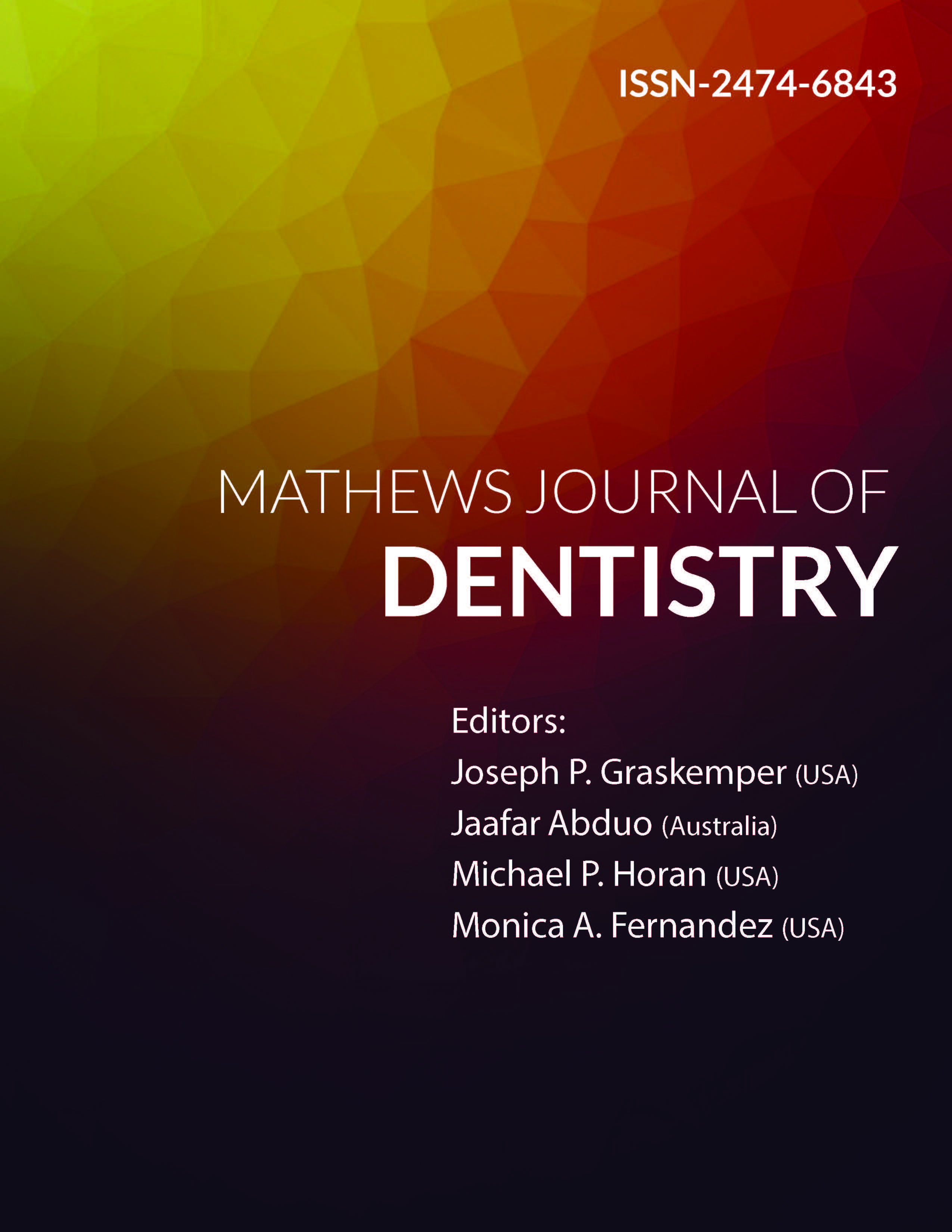
Information Links
Previous Issues Volume 7, Issue 2 - 2023
Broken File Retrieval in the Lower Left Second Molar Using the Ultrasonic Technique
Wided Glii, Amira Kikly, Fouad Brigui, Ameni Chadlia Belguith, Neila Zokkar, Nabiha Douki
Dental Medicine Department of Sahloul Sousse Hospital, Faculty of Dentistry of Monastir, Tunisia
*Corresponding Author: Wided Glii, Dental Medicine Department of Sahloul Sousse Hospital, Faculty of Dentistry of Monastir, Tunisia, Tel: (+216) 93546683, E-mail: [email protected].
Received Date: August 04, 2023
Published Date: August 22, 2023
Citation: Glii W, et al. (2023). Broken File Retrieval in the Lower Left Second Molar Using the Ultrasonic Technique. Mathews J Dentistry. 7(2):36.
Copyrights: Glii W, et al. © (2022).
ABSTRACT
Endodontic file fracture is a common problem in root canal treatment. This may be due to overuse of instruments or incorrect technique in root canals with difficult anatomy. However, a broken endodontic file does not always mean that treatment has failed. Frequently the broken fragment can be removed, and the root canal treatment completed. Separation of a file usually occurs in molars, mainly in the mesiolingual canal due to major curvature, poor access or small diameter. Aim: This article reports the management of an intracanal separated NiTi instruments under operating microscope using ultrasonic technique. Observation: A patient in good general condition was referred by a colleague following an instrument fracture (SX file) in the left mandibular 2nd molar (37). Radiographic examination revealed the presence of a 4mm instrument blocking the middle third of the M°L root. To clean and disinfect the part of the canal beyond the instrument fracture, we decided to remove the instrument from the canal using an ultrasonic technique under an operating microscope. Discussion: Advances in technology have provided a number of tools for the extraction of files, including ultrasonic devices, with the aid of a microscope to facilitate visibility and minimise extraction of dentin from the root canal. Therefore, this report discusses the management of a broken file in a mandibular molar using an ultrasound device with the aid of a microscope. Conclusion: The ultrasonic technique is effective for the removal of broken instruments. Direct, visible access to the fragment under the dental microscope is essential for successful fragment recovery.